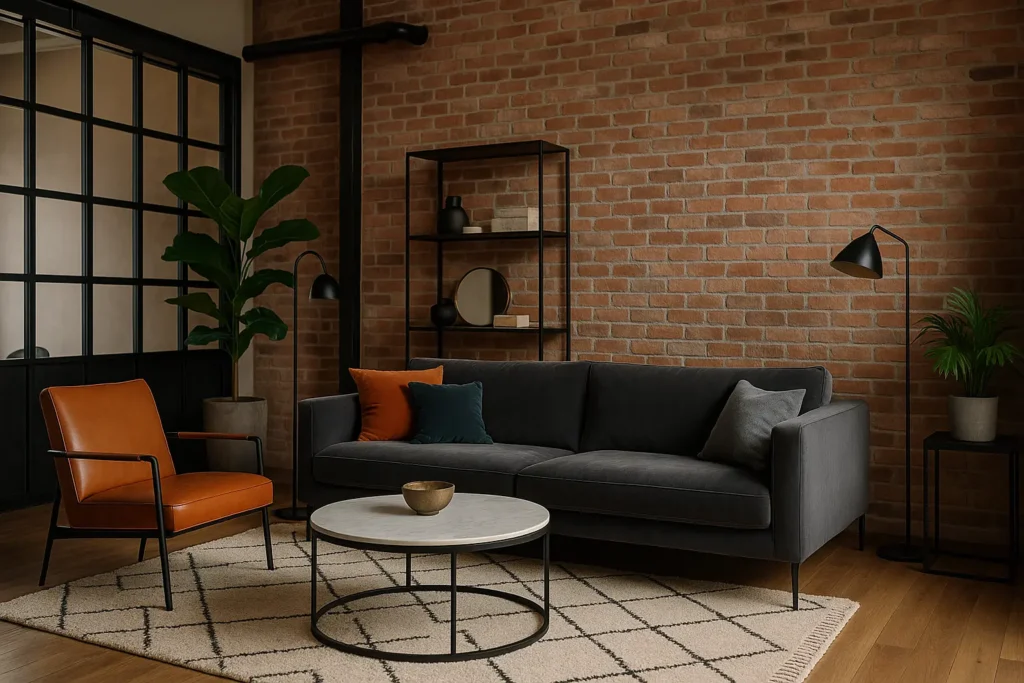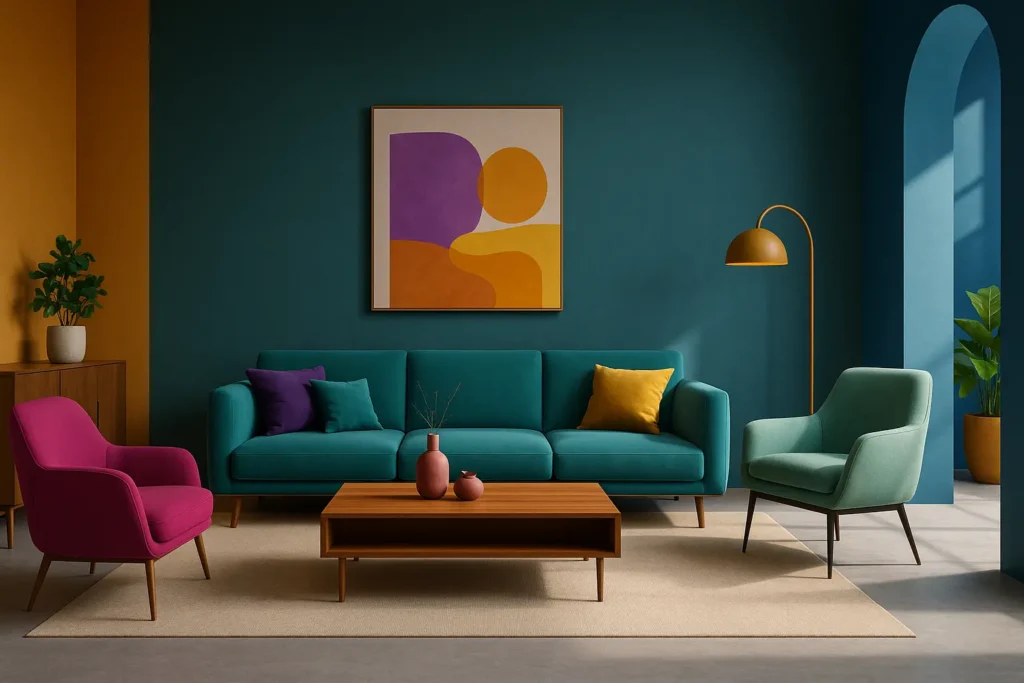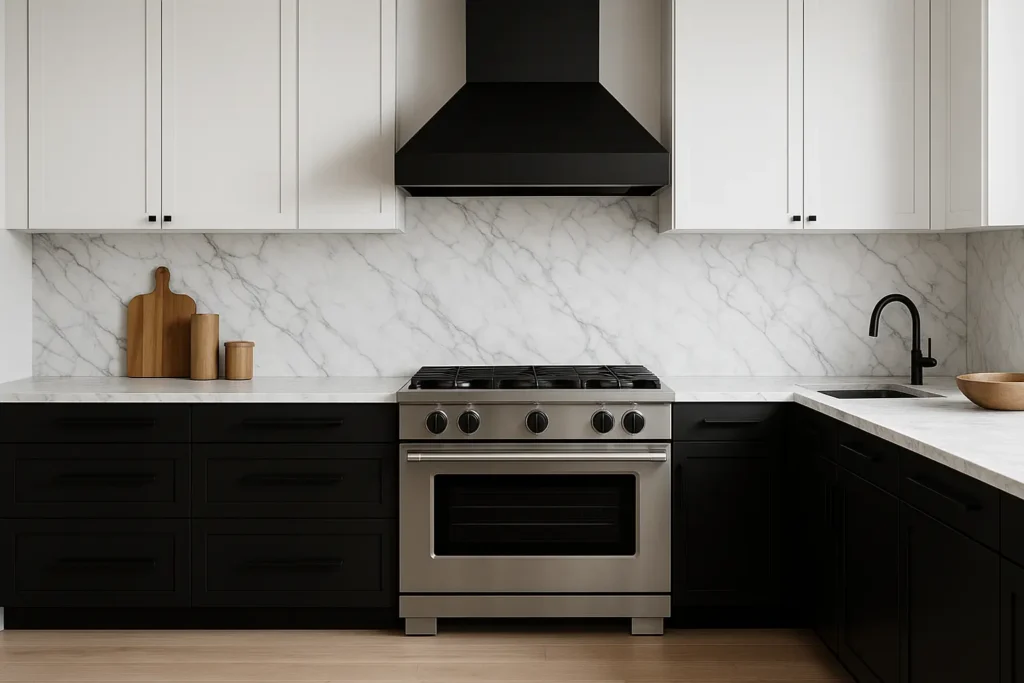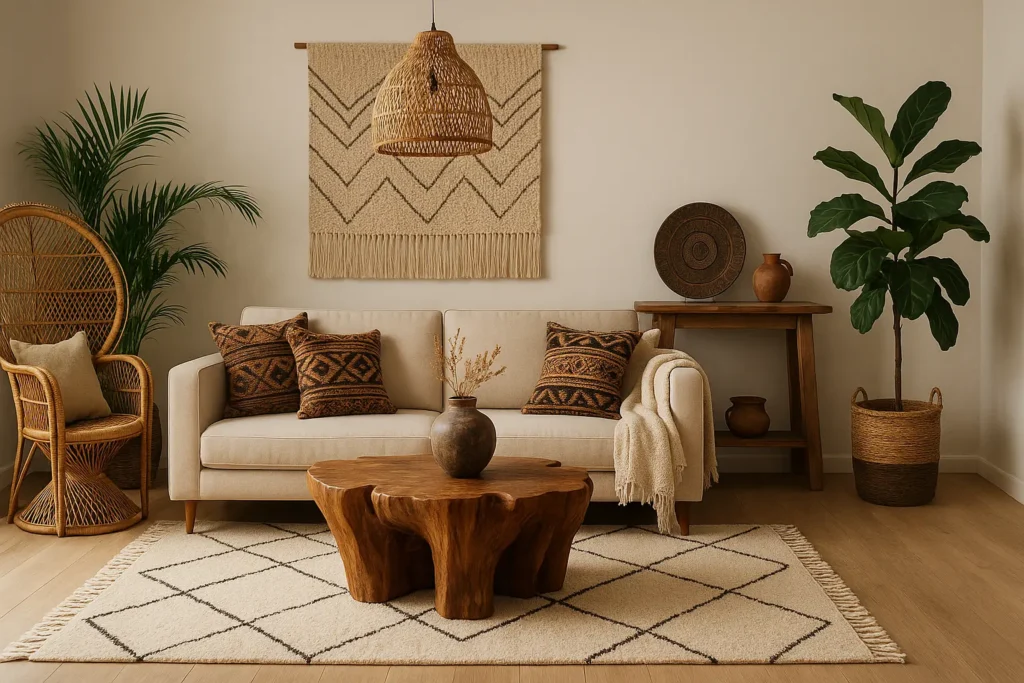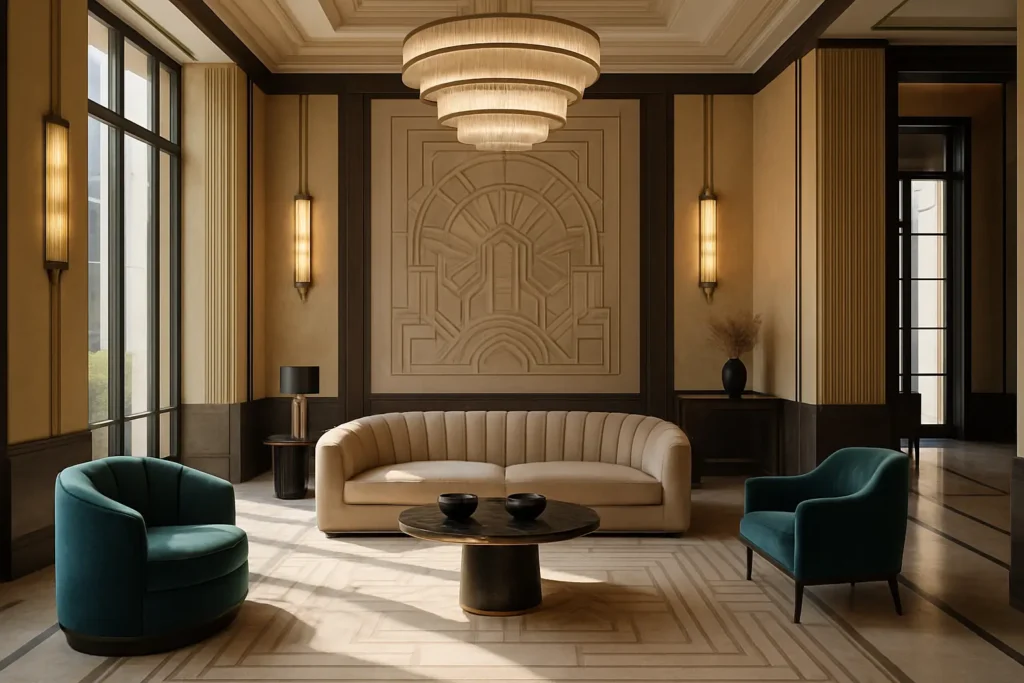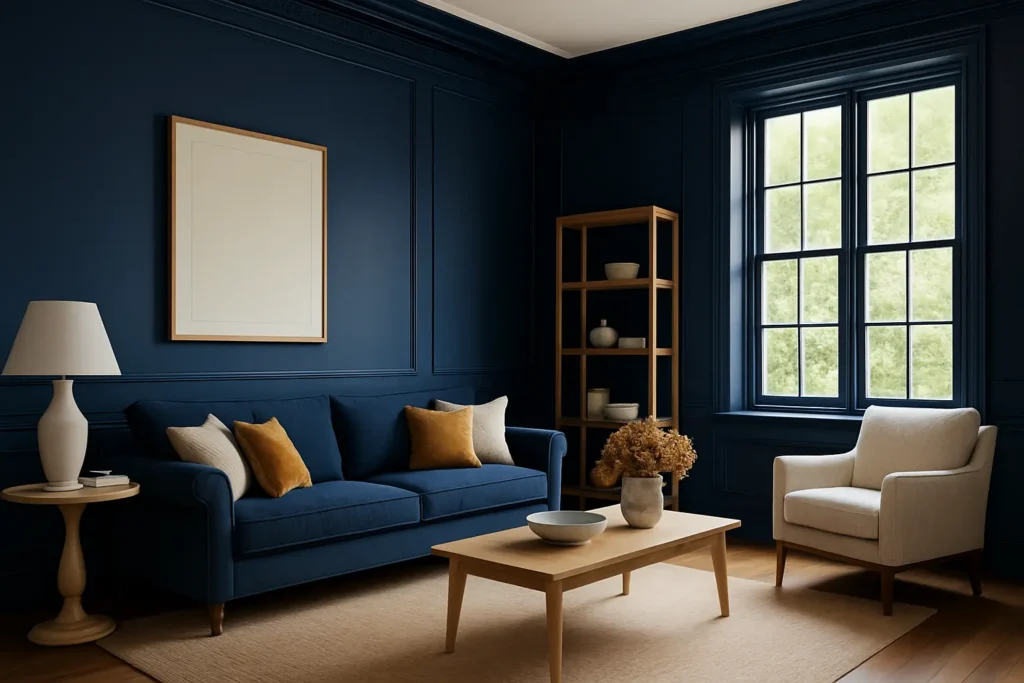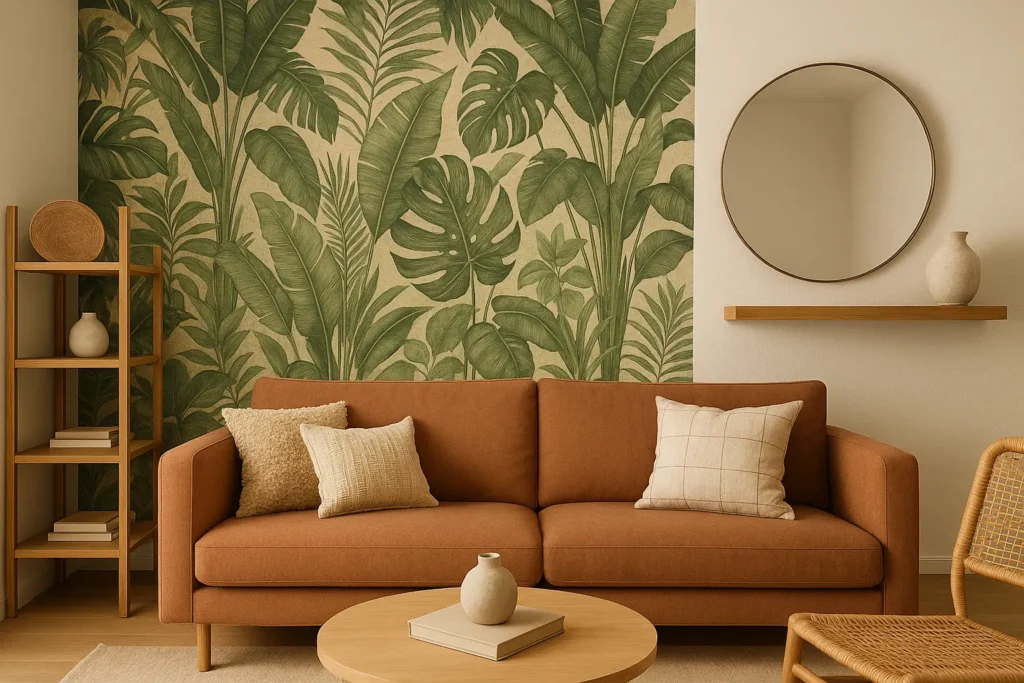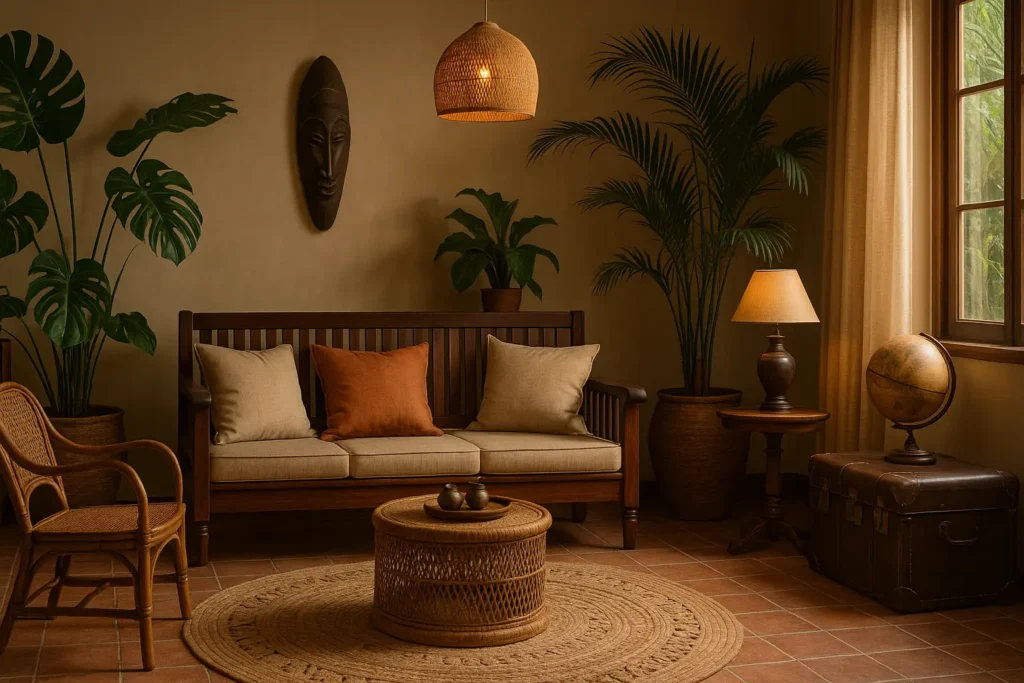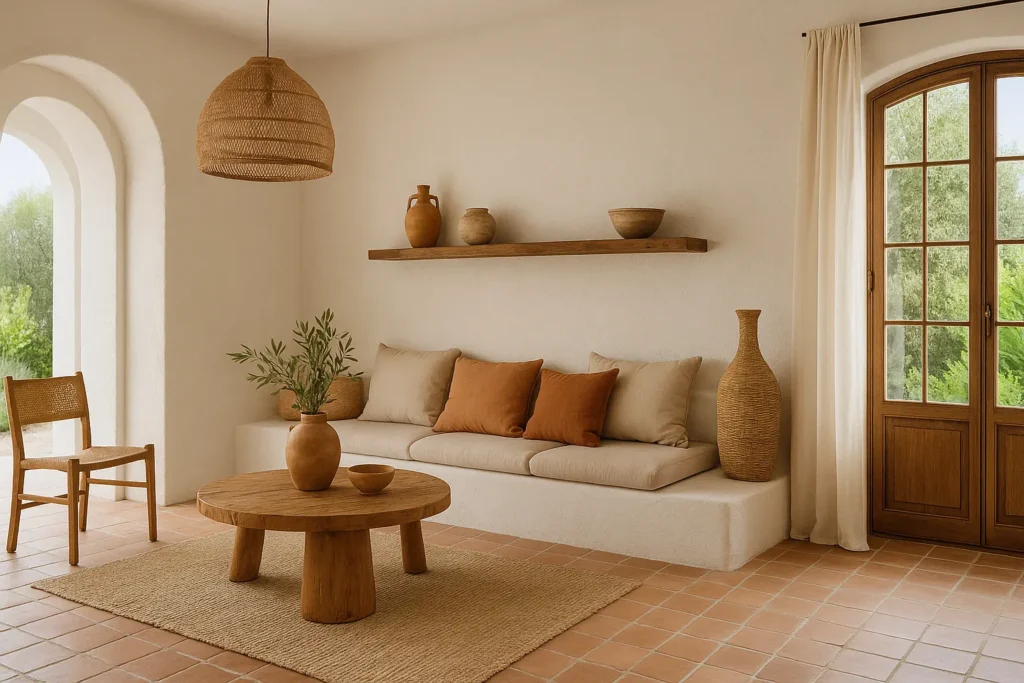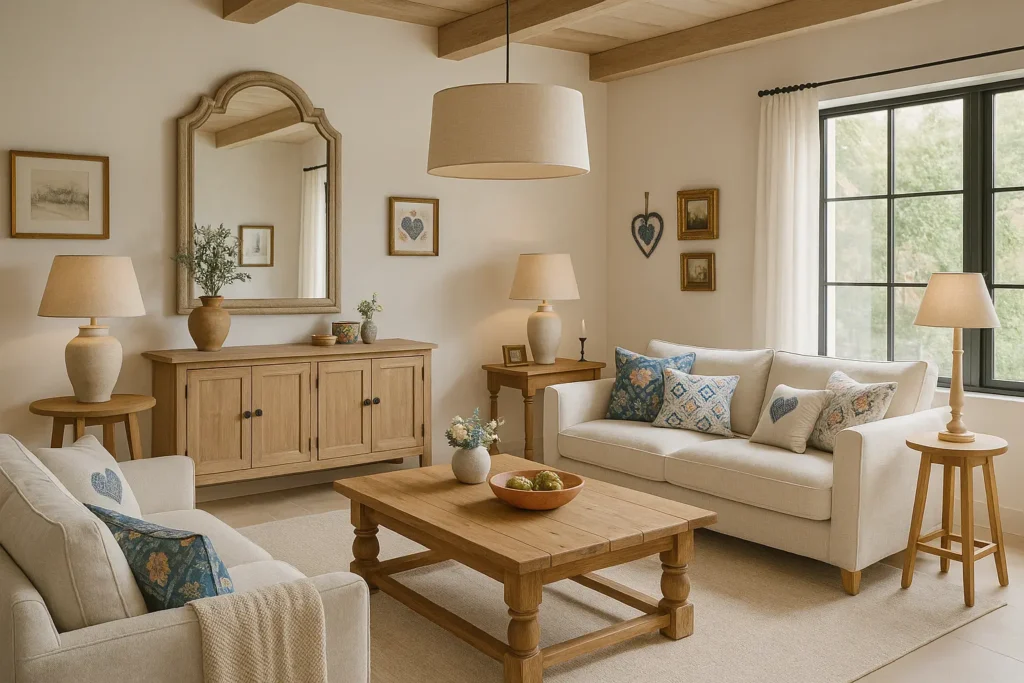The wabi-sabi style is a decorative art inspired by Japanese philosophy that celebrates beauty in imperfection and embraces simplicity as an art of living. At a time when our interiors are often dominated by clean lines and immaculate surfaces, wabi-sabi style invites us to slow down and rediscover the charm of raw materials and objects that bear the imprint of time. Discover wabi-sabi and how to decorate your home in this style, room by room.
In this article
The essence of wabi-sabi: a Japanese philosophy that celebrates imperfection
Born in Japan in the 15th century, the wabi-sabi has its roots in Zen practices and the tea ceremony. The term " wabi » evokes voluntary simplicity and modesty, while "sabi" celebrates the beauty that emerges with the passage of time. This approach teaches us to find harmony in what is imperfect, incomplete, or ephemeral.
THE wabi-sabi style is in direct opposition to our contemporary society obsessed with perfection and perpetual novelty. This ancestral decorative philosophy Rather, it invites us to reconnect with the authenticity of materials and the poetry of objects that tell a story. In a world where everything seems calibrated and standardized, wabi-sabi offers us a profoundly human alternative.
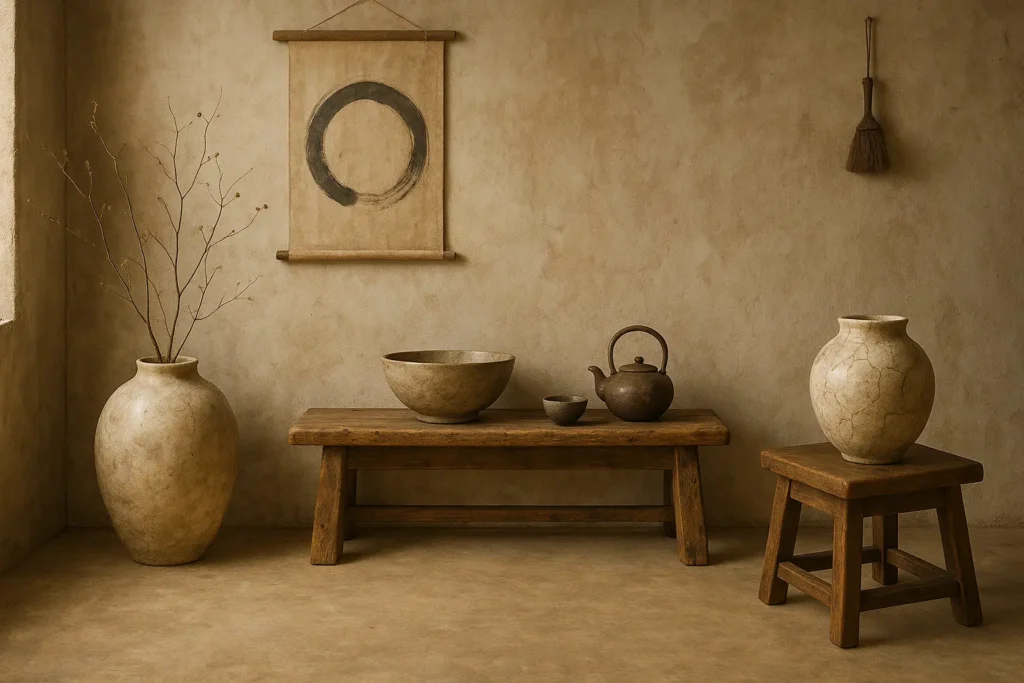
More than just a decorative trend, this approach is a true art of living that transforms our relationship with the space and objects around us. It encourages us to slow down, observe details, and find beauty in the traces left by time—the patina that testifies to a life well lived.
Noble materials and raw textures: the foundation of the wabi-sabi style
At the heart of the wabi-sabi aesthetic are the natural and organic materials which retain their authenticity. The raw wood with its visible knots, the rough stone, the crumpled linen, unbleached cotton or aged bamboo constitute the tactile palette of this style. These noble materials are chosen precisely for their imperfect textures and their ability to improve over time.
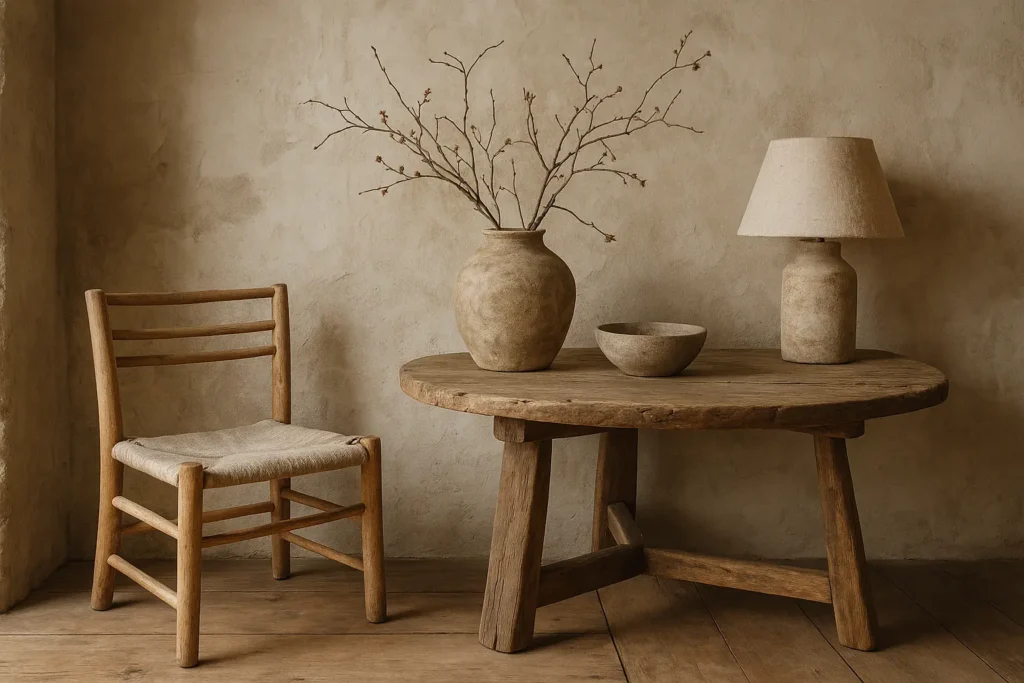
Unlike the smooth, uniform surfaces of contemporary interiors, wabi-sabi emphasizes roughness, irregularities, and signs of wear. A wooden bench with prominent grain, a stone table with a slightly uneven surface, or a raw earth wall with irregular finishes perfectly embody this aesthetic.
To incorporate these textures into your interior, choose untreated wood furniture that reveals its natural grain, artisanal textiles like washed linen with a deliberately wrinkled texture, or handcrafted ceramics. The play of contrasts between different textures—smooth and rough, soft and raw—brings a sensory richness that characterizes wabi-sabi interiors.
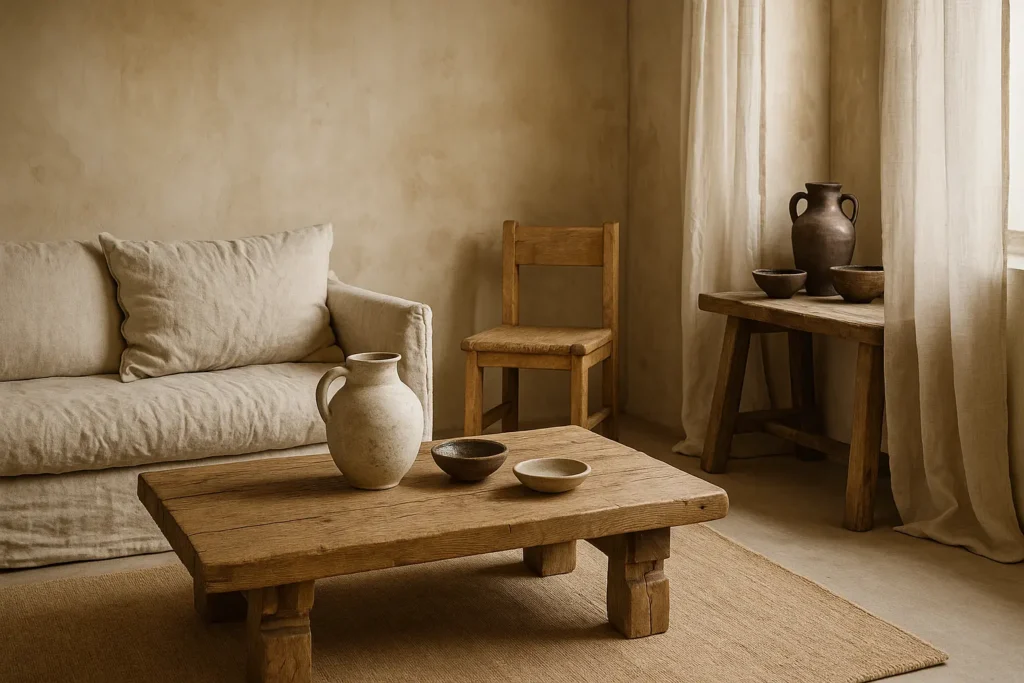
The wabi-sabi color palette: the harmony of natural colors
Earth and nature tones
The palette of wabi sabi color is directly inspired by the colors found in nature. Neutral and earthy tones dominate: sandy beige, stone gray, off-white, bark brown, ochre or terracotta. These soft and soothing colors naturally create a serene and timeless atmosphere, conducive to contemplation.
To enrich this neutral base, you can add a few deeper touches like olive green, indigo blue, or dark brown, which will add depth to the overall effect. The important thing is to maintain a subtle harmony, without too much visual disruption.
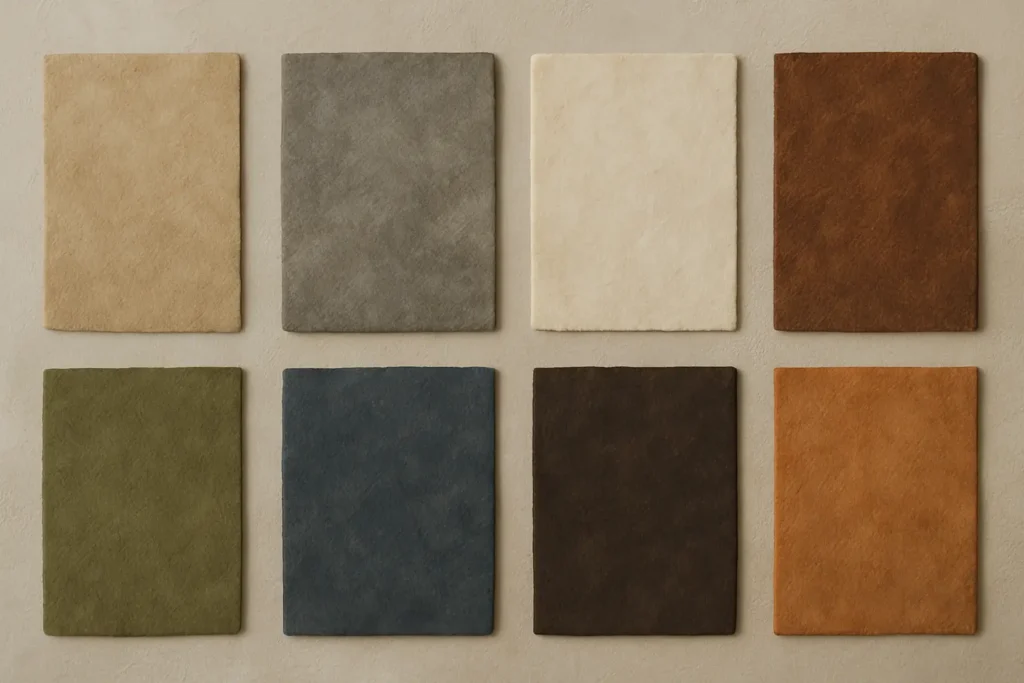
Avoid bright colors and bold geometric patterns that distract from the intrinsic beauty of the materials. In a wabi-sabi interior, it's the natural textures and shades that create visual interest, not dramatic color effects.
The art of recycling: giving objects a second life
THE wabi sabi and reclaiming make a perfect marriage. This philosophy, which celebrates the traces of time, finds its most authentic expression in old, worn, or reclaimed objects. A patinated piece of furniture, a frayed textile, or an object bearing the marks of its past use tell a story that new pieces cannot match.
THE Kintsugi, the Japanese art of repairing broken ceramics with lacquer dusted with gold, beautifully illustrates the wabi-sabi spirit. Instead of hiding cracks, this technique highlights them, transforming the breakage into an aesthetic element. This poetic celebration of imperfection invites us to see the beauty in what is broken and then repaired.
In your home, this spirit can translate into the transformation of old objects: an old wooden ladder turned into a towel rack, a tree trunk transformed into a side table, or recycled wine crates into wall shelves. Each reclaimed piece brings a unique soul and story to your decor.
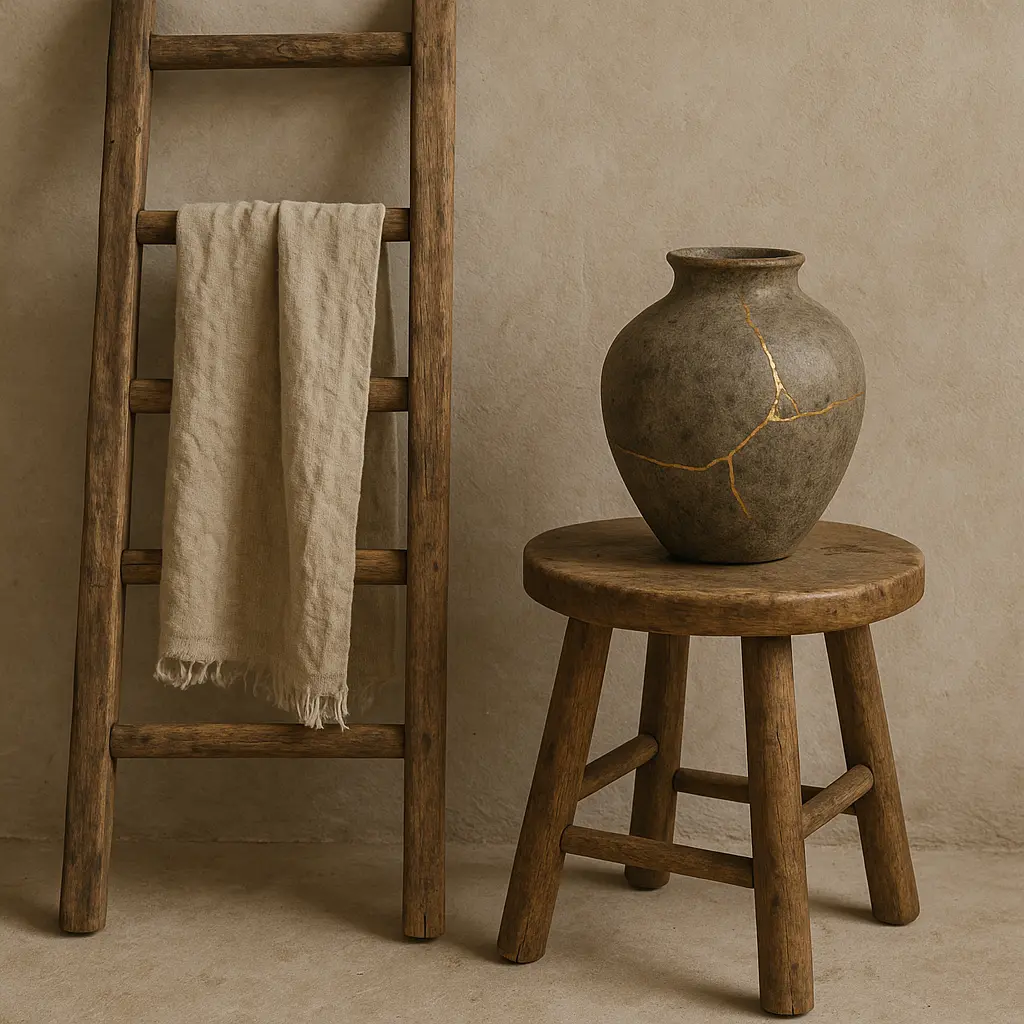
Conscious Minimalism: The Art of Simplicity
| Contemporary minimalism | Wabi-sabi minimalism |
|---|---|
| Straight and geometric lines | Organic and asymmetrical shapes |
| Smooth and uniform surfaces | Varied and irregular textures |
| Almost clinical absence | Warm and lively simplicity |
| Technical perfection | Beauty in imperfection |
Wabi-sabi embraces the principle of "less is more," but its take on minimalism differs significantly from contemporary trends. It's not about creating empty, clinical spaces, but rather pared-down environments where each element has been carefully chosen for its imperfect beauty and meaning.
This approach invites us to declutter our interiors to keep only objects that have functional or emotional value. In this approach, quality always prevails over quantityA single imperfect but beautiful handcrafted vase will bring more character than a collection of soulless objects.
Empty spaces are not seen as voids to be filled, but as necessary breathing spaces that highlight the chosen objects. This form of conscious minimalism encourages us to consume less but better, favoring durable pieces that improve over time.
Designing a Wabi Sabi Living Room: Creating a Space of Serenity
To create a living room wabi-sabi, start by selecting furniture with simple, organic lines, preferably made of natural wood that reveals its grain and knots. A comfortable sofa upholstered in undyed linen or cotton, a few cushions in bouclé wool or hemp, and a coffee table in raw wood or natural stone will provide the perfect base.
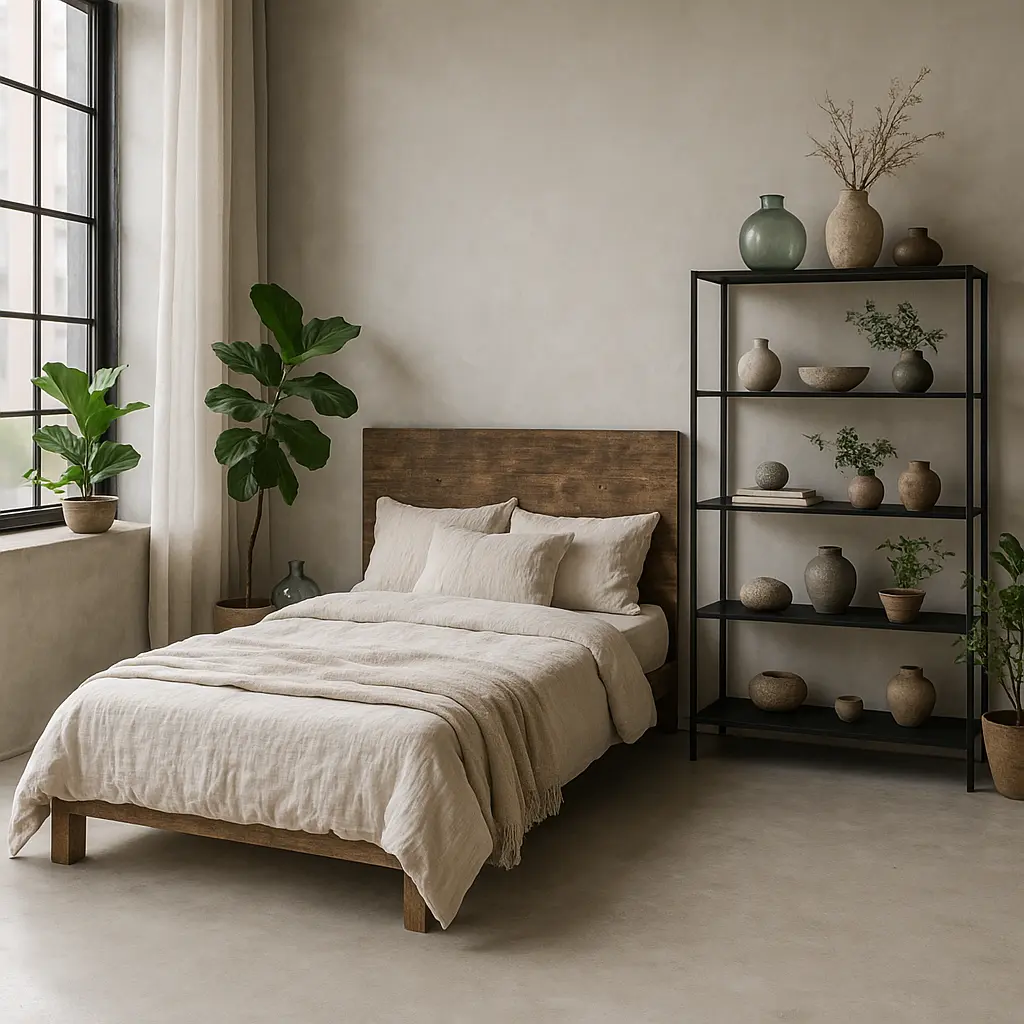
Favor natural light by keeping your windows clear, possibly dressed with linen or cotton voile curtains that will gently filter the light. For the evenings, opt for soft and warm lighting: handmade ceramic lamps, wooden or stone candlesticks, lanterns washi paper.
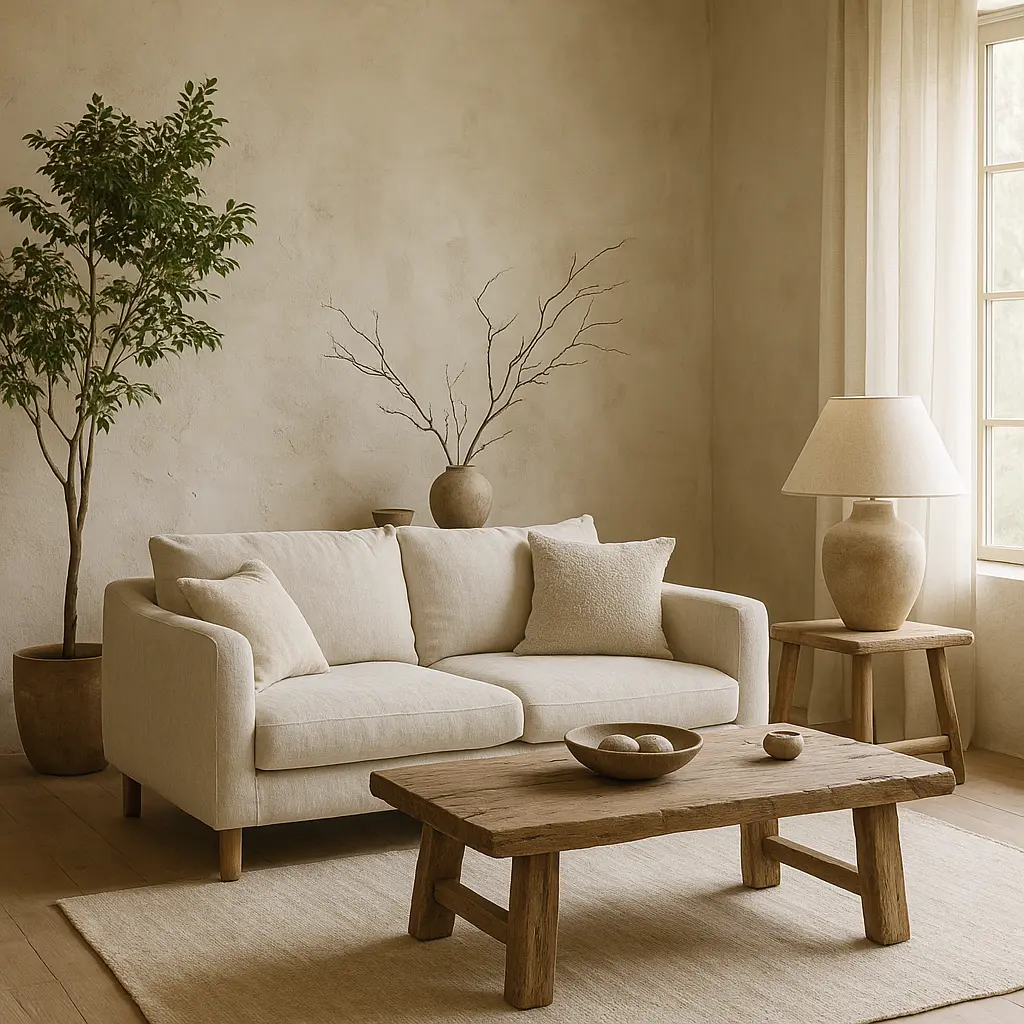
Here are our tips for a wabi sabi living room :
- Integrate indoor plants with natural and asymmetrical shapes like a ficus, an indoor olive tree or grasses that will bring life and movement.
- Limit decorative objects to a few carefully chosen pieces: a handcrafted ceramic, a weathered wooden bowl, a few pebbles picked up during a walk.
- Create asymmetrical compositions that respect the Japanese principle of ma (space between things) for natural visual harmony.
- Incorporate a raw natural element like a dried tree branch or a piece of driftwood to add an organic touch.
The wabi sabi room: an authentic haven of peace
There bedroom is the ideal space to fully express the wabi sabi philosophyIts atmosphere should invite rest and disconnection, far from the hustle and bustle of everyday life. Opt for a single bed, ideally made of untreated natural wood, dressed in natural materials such as washed linen or organic cotton in neutral tones – off-white, beige, stone gray or pale blue.
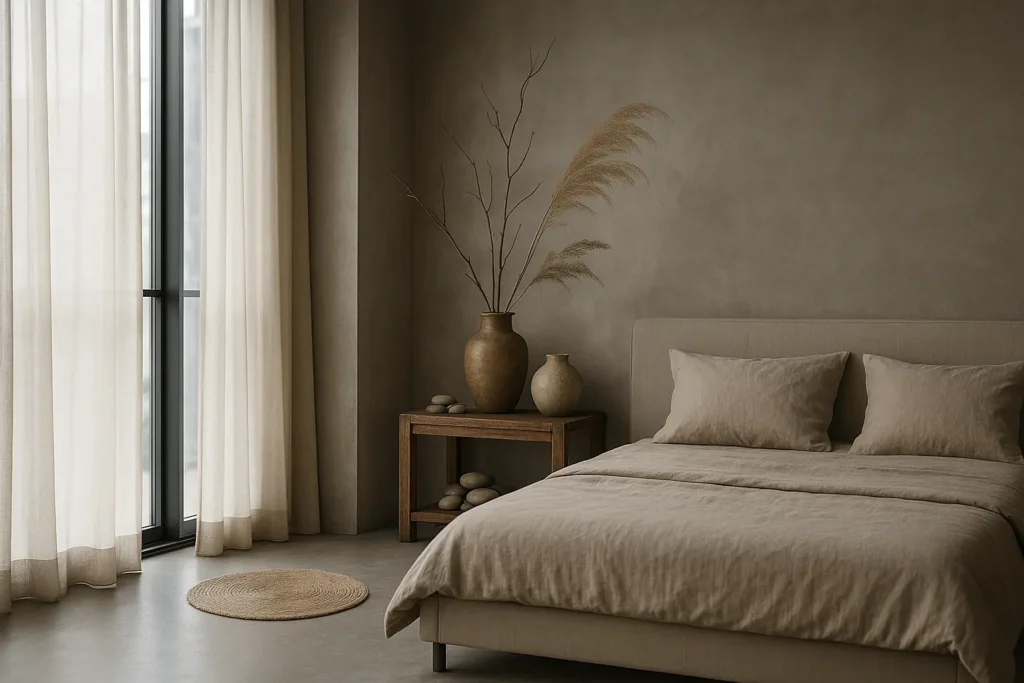
THE wabi sabi bedroom walls will benefit from being painted in soft, soothing colors, such as a slightly earthy white or a warm gray. You can also opt for a lime plaster which will offer a slightly irregular and lively texture, perfectly in keeping with the wabi-sabi spirit.
Limit furniture to the essentials in a wabi-sabi room : a distressed wooden chest of drawers, a simple chair, perhaps a small bedside table made of raw materials. For decoration, a few elements will suffice: a handmade ceramic vase containing a simple branch, a wooden sculpture with organic shapes, or a hand-woven wall textile.
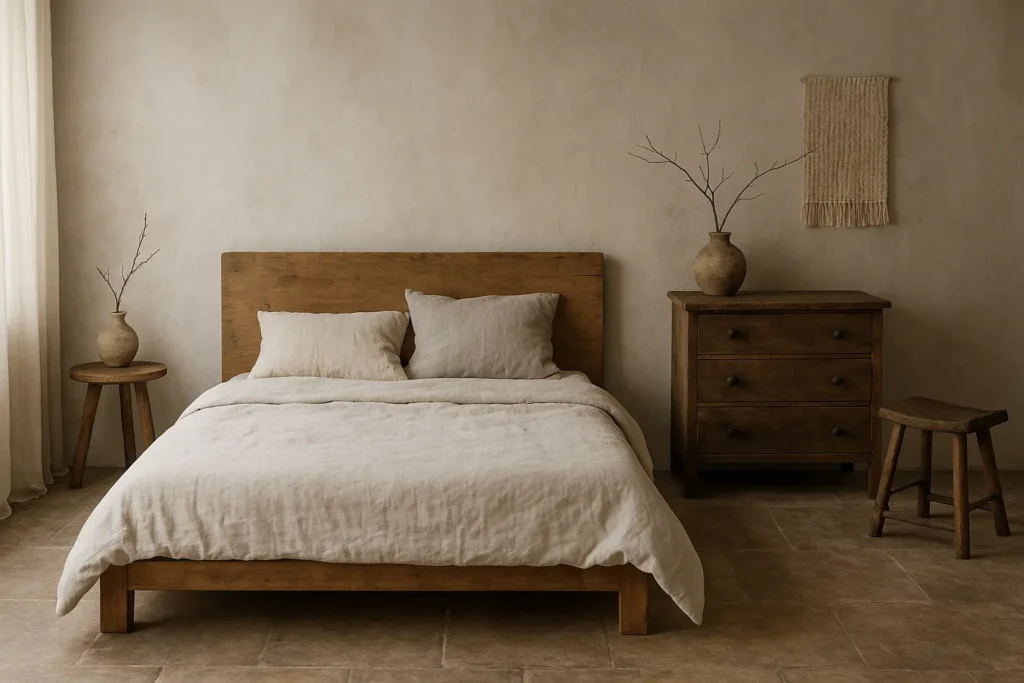
Wabi sabi decoration: choosing the imperfect to create harmony
Decorative accessories play an essential role in a wabi-sabi interior, but they must be chosen wisely. Choose handcrafted ceramics with organic and asymmetrical shapes : irregular bowls, vases with imperfect silhouettes, plates with crackled enamels. These hand-crafted objects bear the imprint of their creator and possess a soul that industrial productions cannot match.
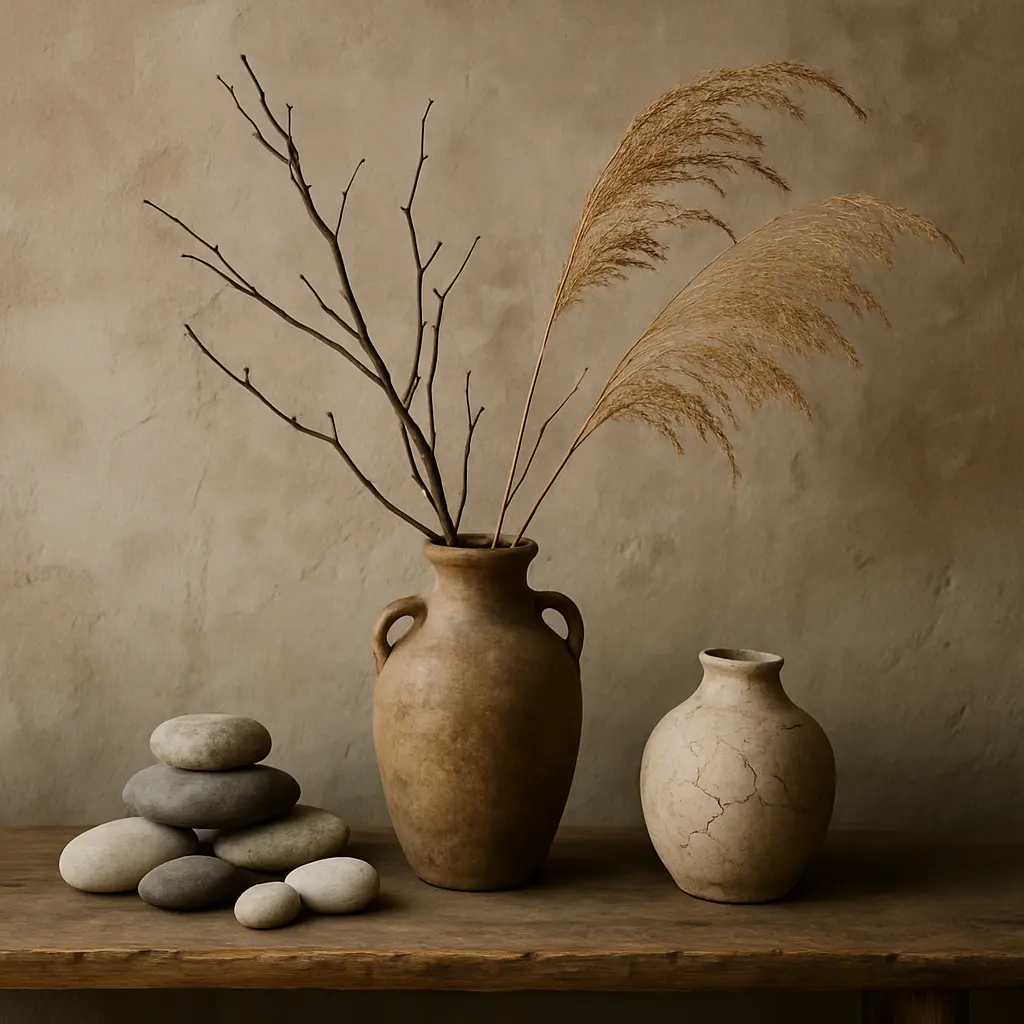
Natural textiles add warmth and texture: a raw wool throw over a sofa, crumpled linen cushions, or a hand-woven rug made from plant fibers. Choose pieces that retain the authentic look of the material, without harsh chemical dyes.
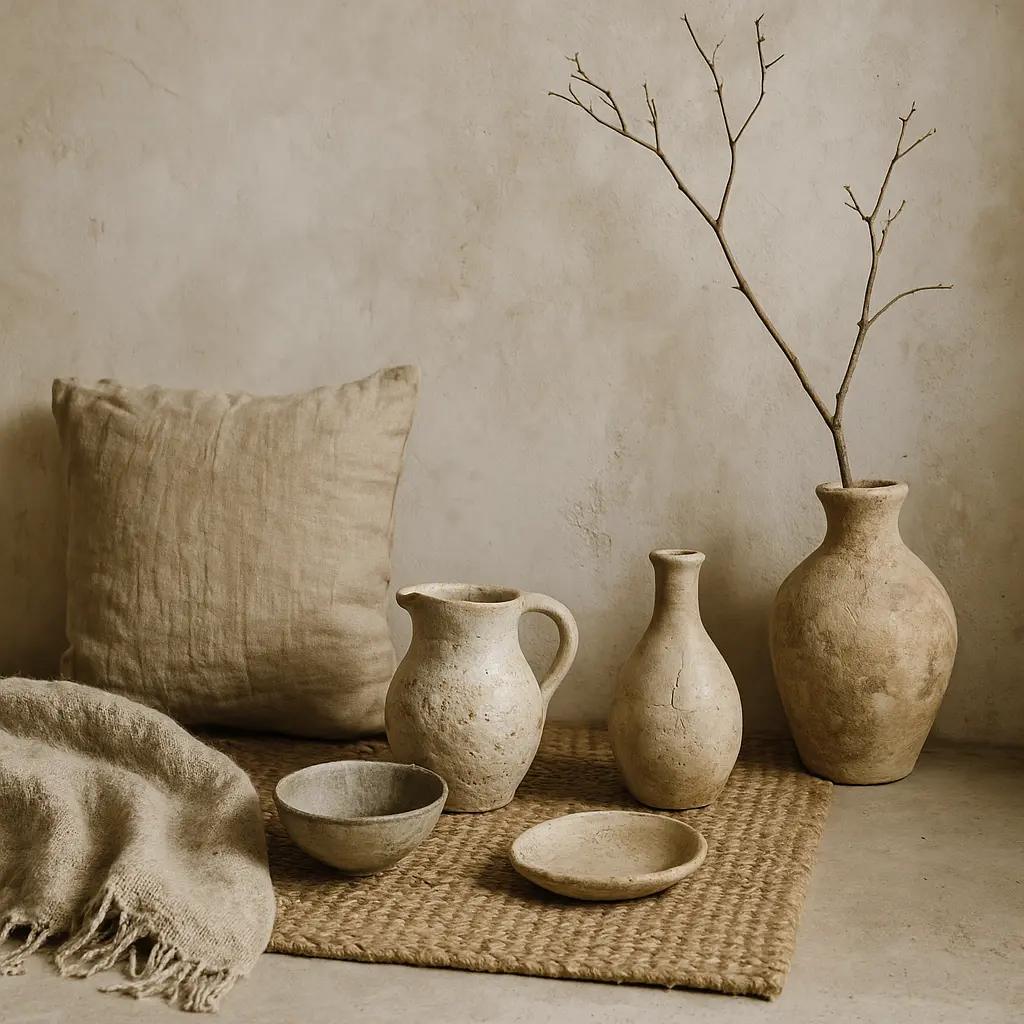
Incorporate elements taken directly from nature: a collection of stones collected during your walks, dried branches arranged in a rustic vase, dried plants with graceful shapes. These natural touches strengthen the connection between your interior and the outside world, creating a harmonious environment that invites contemplation and serenity.
